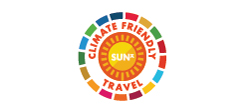Inclusive cities are resilient cities.
Just 8% of persons with disabilities reported that local disaster risk reduction (DRR) plans addressed their specific needs (UNDRR’s 2023 Global Survey on Persons with Disabilities and Disasters). Clearly, local authorities must do better when it comes to inclusion in their DRR processes.
In 2023, twenty-one cities applied UNDRR’s ‘Disaster Resilience Scorecard for Cities - Annex for the Inclusion of Persons with Disabilities’ under the MCR2030 initiative. The Annex, which is aligned with the UN Strategy for the Inclusion of Persons with Disabilities and the Ten Essentials for Making Cities Resilient, promotes inclusion and accessibility in the urban environment, so that no person with a disability be left behind. With technical support from UNDRR and financial backing from the Ministry for Foreign Affairs of Finland and the Ministry of Foreign Affairs, Republic of Korea, the cities assessed local capacities across 19 indicators distributed among the Ten Essentials.

While there was progress on some elements of these Ten Essentials, most of the cities grapple with persistent challenges – notably when it comes to comprehensive disability inclusion.
This shows a clear need for better progress on disability inclusive DRR practices across urban settings.
Here are ten key recommendations for cities to enhance disability inclusion in DRR:
-
Recognize and prioritize the inclusion of persons with disabilities in policies, making sure they spell out their fundamental rights in plans and policies.
-
Put in place a system to collect disaggregated data on persons with disabilities, and make it part of risk assessments for targeted and inclusive DRR strategies.
-
Working with all key stakeholders, develop local awareness campaigns and capacity-building initiatives that meet the varied needs of persons with disabilities.
-
Ensure the active and meaningful participation of persons with disabilities and organizations of persons with disabilities (OPDs) in DRR planning.
-
Designate empowered focal points with disability inclusion expertise to allow coordination between DRR offices, stakeholders, and OPDs;
-
Embed specific budget allocations for disability-inclusive measures within the local resilience strategy, and seek additional funding for disability-inclusive resilience initiatives in resource-poor contexts.
-
Implement comprehensive local building codes prioritizing universal design and accessibility – and make sure these are enforced.
-
Work with OPDs and stakeholders to develop contingency plans for post-disaster living and meeting spaces that protect persons with disabilities.
-
Put in place local government systems for effective and inclusive forecasting, monitoring, and communication that meet the diverse needs of persons with disabilities;
-
Ensure post-disaster reconstruction is inclusive, by working with OPDs, learning from failures, and incorporating lessons into reconstruction projects.
By following these recommendations cities can become more inclusive, resilient, and prepared for disasters, addressing the needs of all their citizens at all stages of the disaster risk reduction process – including persons with disabilities.
-
Learn more in the UNDRR report Advancing disability inclusion in local disaster risk reduction
- Posted on UNDRR News linkedin channel







